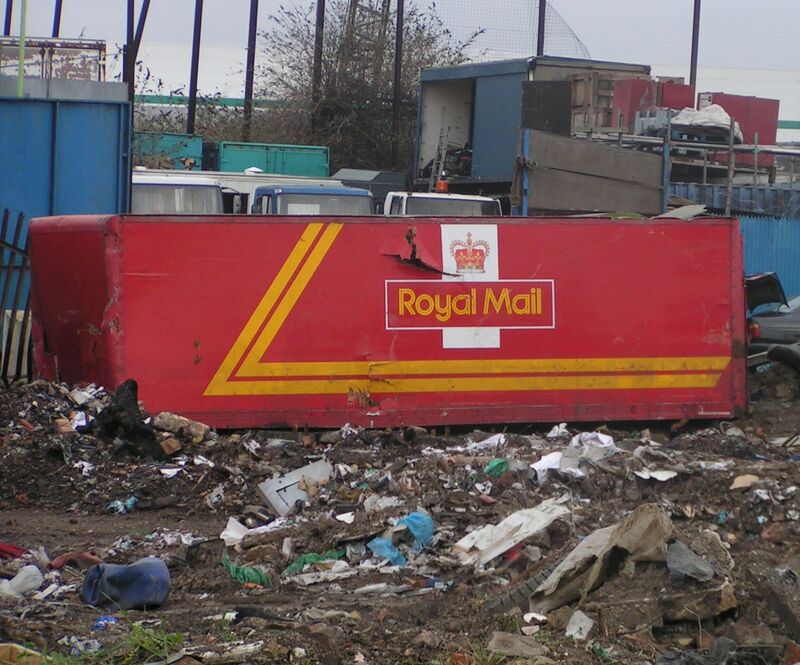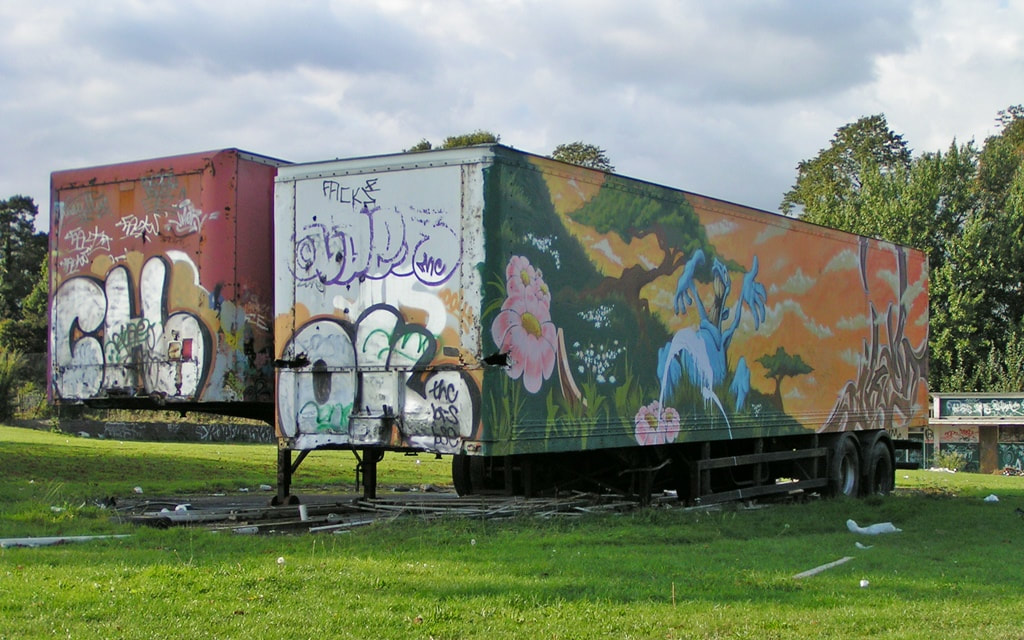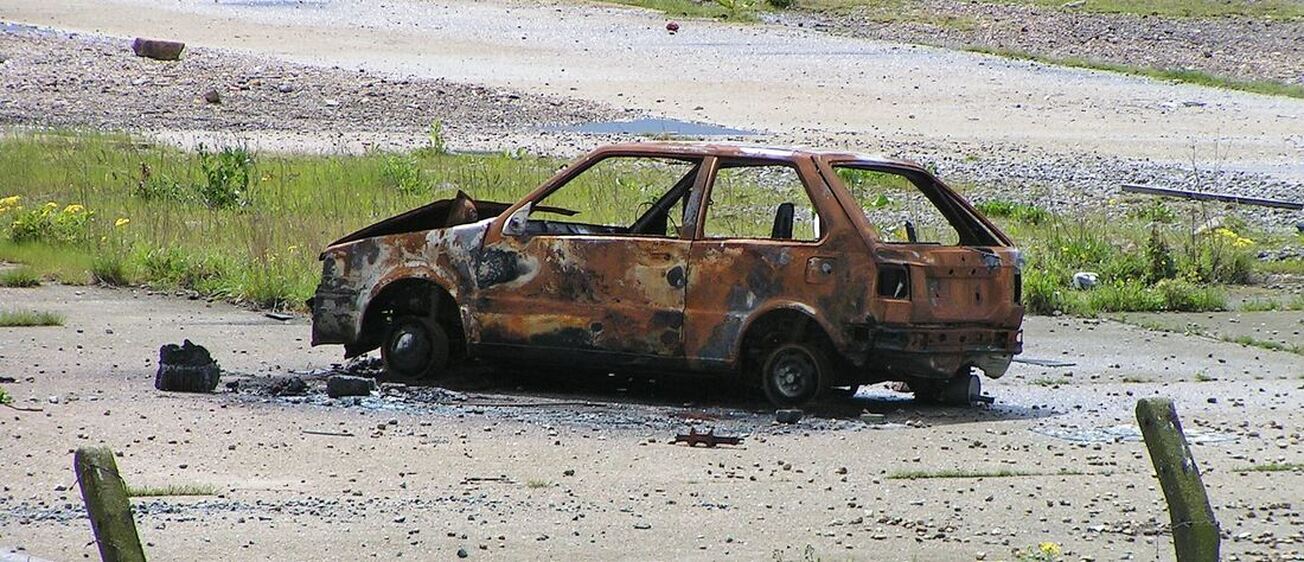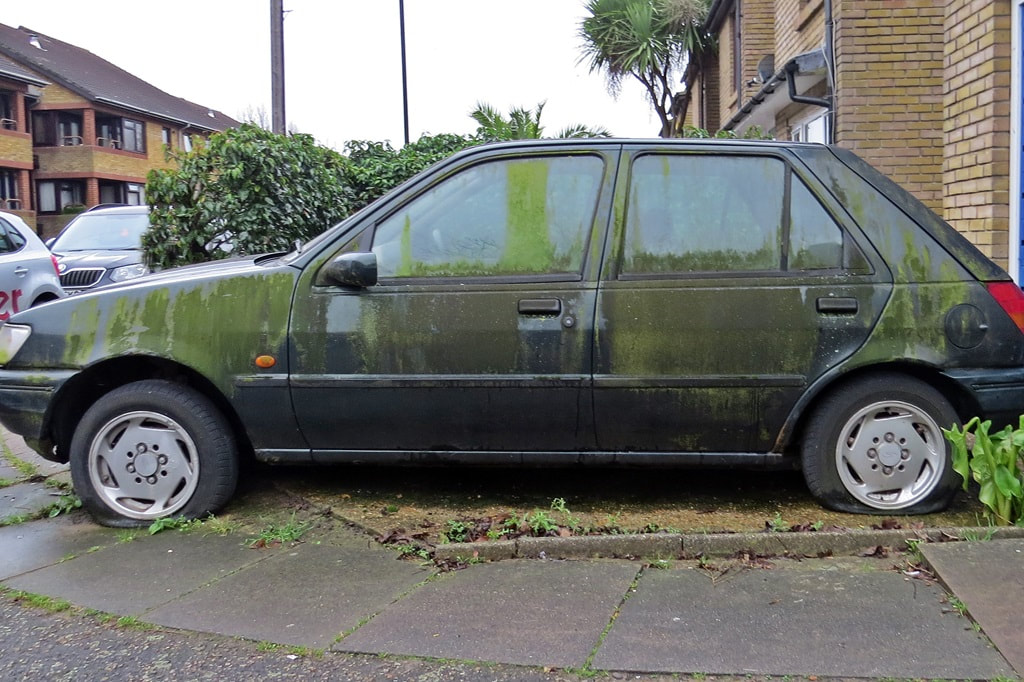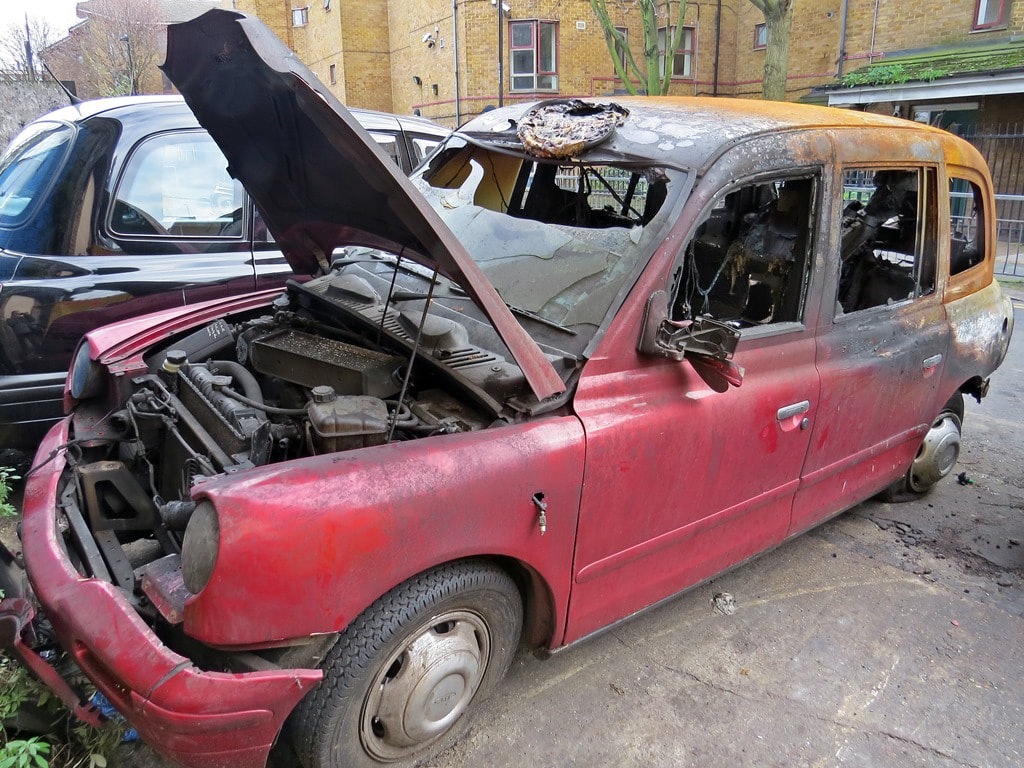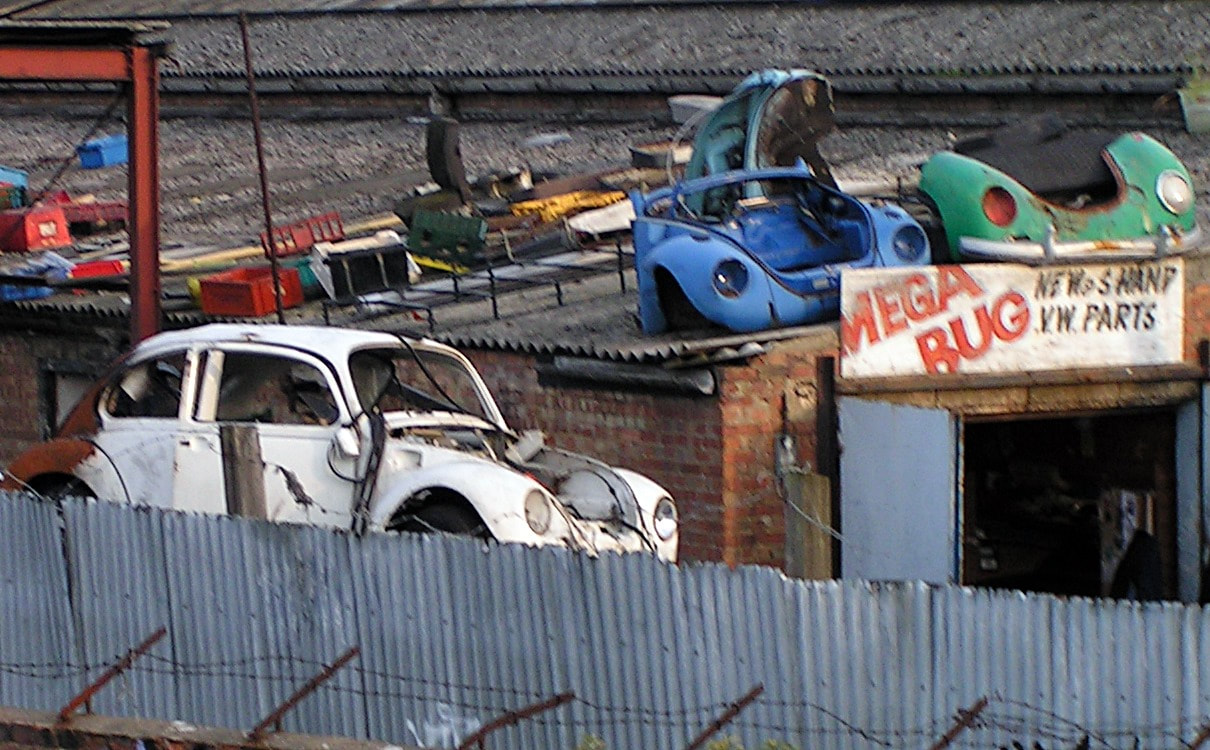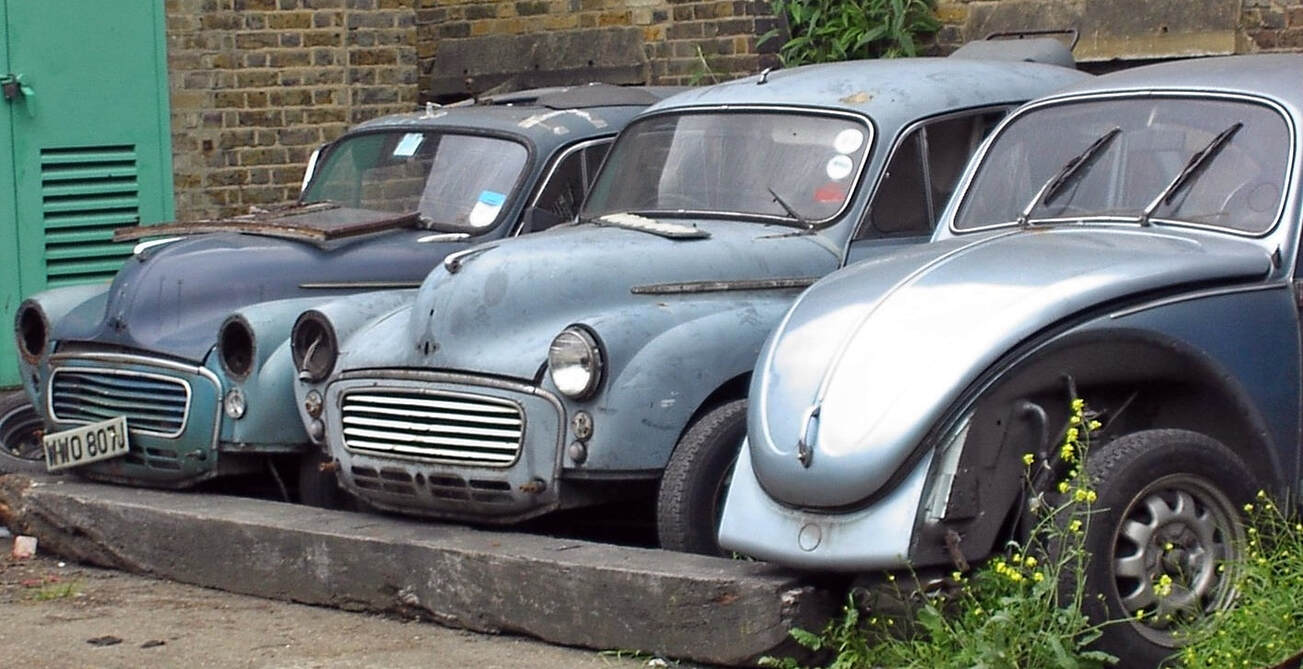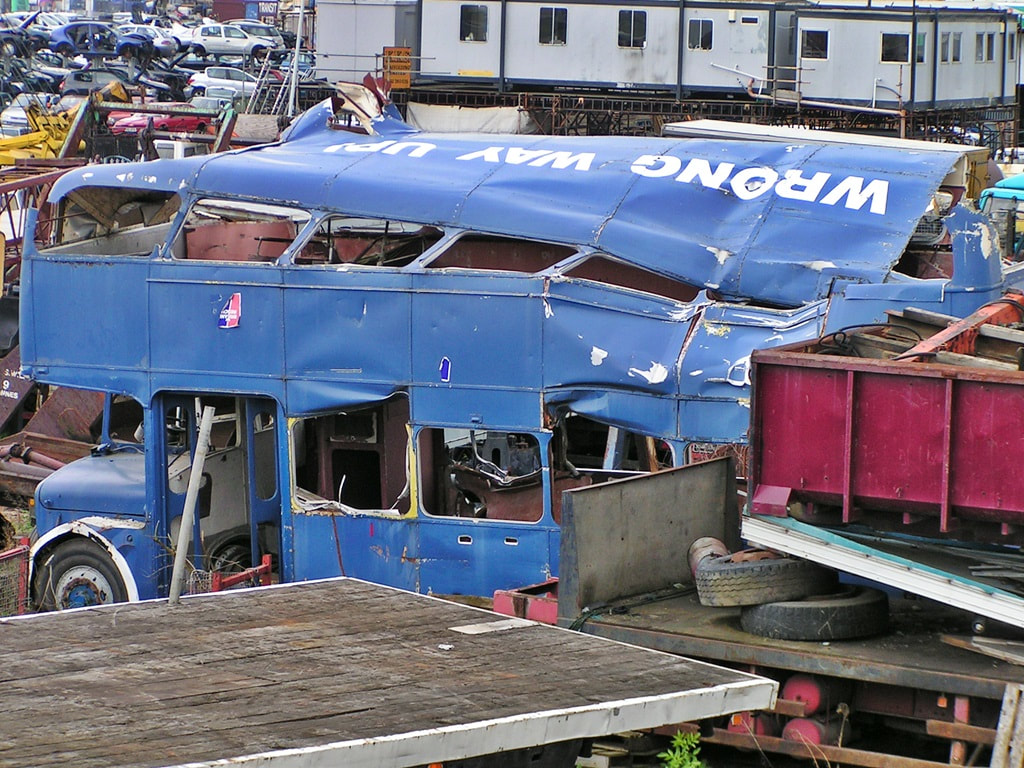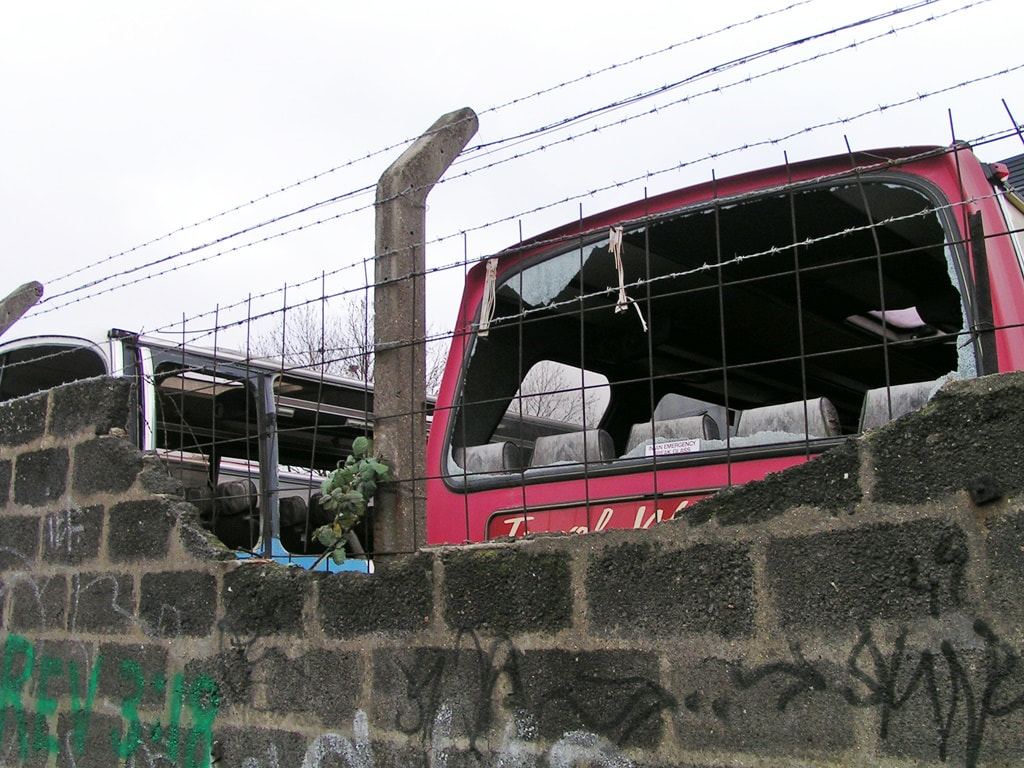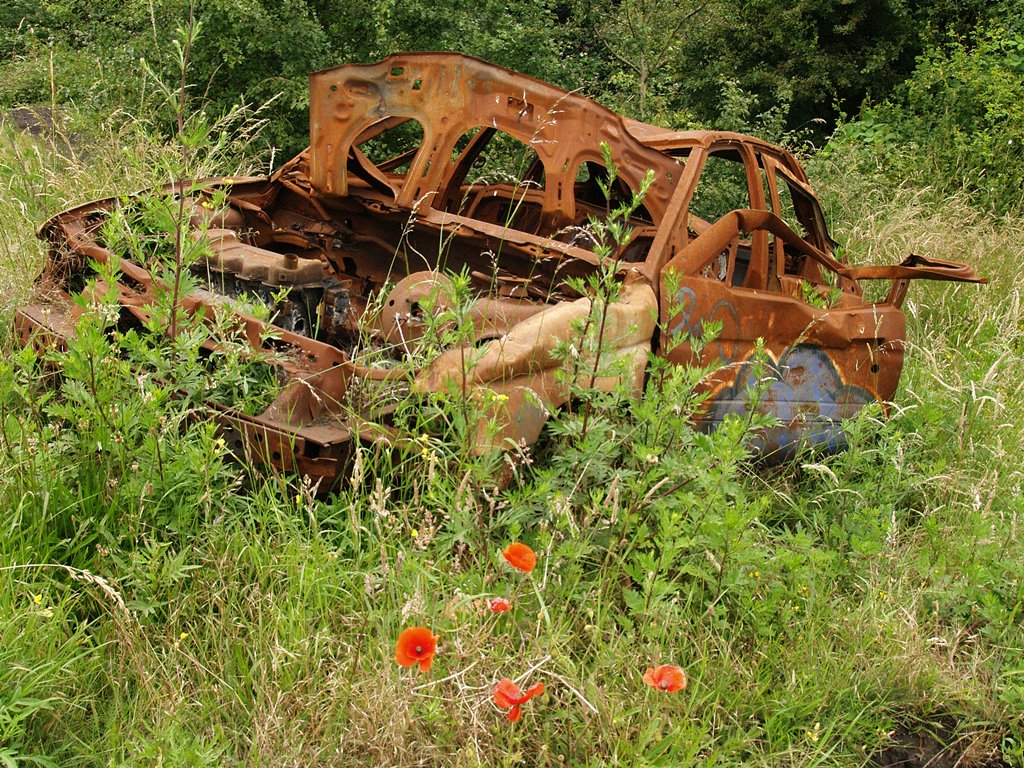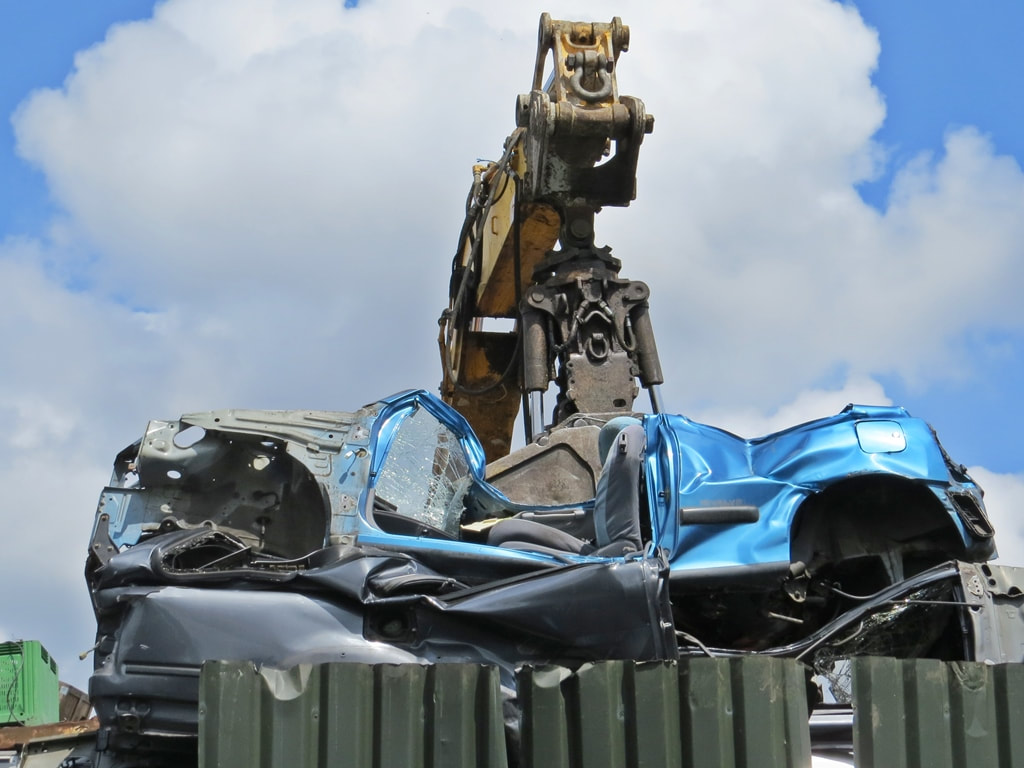Derelict London - Motor Vehicles - Cars, Vans, Lorries, Vans, Coaches,Motorcycles and Mopeds (+ Thunderbird 4)
This gallery covers photographs that I have taken since I started this website back in 2003 so many of these are long gone by now. I shall continue to add pics as I still stumble upon a few vehicles when off the beaten track.......
Ford Cortina Mark 2 and Austin Mini
Both of the iconic British cars below were spotted neglected & rotting away in people’s gardens – the Ford Cortina Mark 2 in Clapham and the Austin Mini in Woodford. The Cortina is around 40 years old, being one of the million or so made between 1966 and 1970 (very few survive today). The Mini was, of course, the most popular British-made car ever, with over five million manufactured between 1959 and 2000.
Apart from the fact that both cars are rusting away, they also have in common a Michael Caine connection. He drives a silver Mark 2 Cortina in the 1971 film Get Carter and the Mini played a key role in the 1969 cult film The Italian Job.
Apart from the fact that both cars are rusting away, they also have in common a Michael Caine connection. He drives a silver Mark 2 Cortina in the 1971 film Get Carter and the Mini played a key role in the 1969 cult film The Italian Job.
More Minis:
Imperials Prestige Used Cars - Chadwell Heath,Romford. RM6
This site remains derelict after a huge fire ripped through this luxury car dealership in November 2018. Around 125 firefighters spent almost nine hours tackling the fire at Imperials. Several vehicles, including two Land Rovers, a BMW and a Mercedes, were destroyed in the fire though luckily nobody was injured.Explosions were narrowly avoided as firefighters were able to drive around 40 cars offsite and remove and a number of pressurised gas cylinders from the scene.
The cause of the fire has been treated as suspicious
The cause of the fire has been treated as suspicious
Derelict and Abandoned Commercial Vehicles
Bromley-By-Bow E14 - Milkfloat
The clink of glass milk bottles as they are deposited on doorsteps and the hum of the milkfloat pulling away at the crack of dawn is pretty much a thing of the past in London. Cheap milk in supermarkets and superstores means that many people are no longer attracted to the idea of having pints of milk dropped off on the doorstep every morning.
They probably also reckon that bottles of milk get stolen.
They probably also reckon that bottles of milk get stolen.
Every year in Britain between six and seven million used cars are sold, and two million are scrapped. The EU has introduced strict environmental rules on how cars should be disposed of through its End of Life Vehicle Directive, while new rules designed to combat copper and other metal theft have had the curious impact of making it illegal for car owners to be paid cash when scrapping a vehicle.
Rules introduced in 2005 make it a legal requirement that any car sent to be scrapped must go to an Authorised Treatment Facility. All car scrapyards must have a licence issued by the Environment Agency or Scottish Environment Protection Agency to ensure that scrapped vehicles don't harm the environment (all that battery acid, gearbox oil and engine parts) and that they are recycled appropriately.
Rules introduced in 2005 make it a legal requirement that any car sent to be scrapped must go to an Authorised Treatment Facility. All car scrapyards must have a licence issued by the Environment Agency or Scottish Environment Protection Agency to ensure that scrapped vehicles don't harm the environment (all that battery acid, gearbox oil and engine parts) and that they are recycled appropriately.
Knackered Hackney Carriages (aka Black Cabs or London taxis)
In the UK the name hackney carriage refers to a taxicab licensed by the Public Carriage Office. 'Hackney' is derived from the village name Hackney (now part of London) which supplied horses from its surrounding meadows. UK regulations define a hackney carriage as a taxicab allowed to ply the streets looking for passengers to pick up, as opposed to private hire vehicles (sometimes called minicabs), which may pick up only passengers who have previously booked or who visit the taxi operator's office. In London, hackney-carriage drivers have to pass a test called The Knowledge to demonstrate that they have an intimate knowledge of the geography of London streets, important buildings, etc. Learning The Knowledge allows the driver to become a member of the Worshipful Company of Hackney Carriage Drivers.
As part of the Transported by Design programme of activities,in 2015, after public voting, the black cab was elected by Londoners as their favourite transport design icon.
As part of the Transported by Design programme of activities,in 2015, after public voting, the black cab was elected by Londoners as their favourite transport design icon.
Friern Barnet, N10 - Sewage Works
The sewage works here closed in the 1960s and the site has been used as a dumping ground ever since. The vehicles shown here may well have been stolen before they were torched. Years of fly-tipping have led to claims that the land is contaminated and so unsuitable for residential development.
Redundant VW Beetles
The Volkswagen Type 1, widely known as the Volkswagen Beetle was produced by the German Volkswagen (VW) from 1938 until 2003. With over 21 million manufactured the Beetle is the longest-running and most-manufactured automobile of a single design platform anywhere in the world. Here are a few decaying Beetles spotted around London.
Mark Holland writes "Looked at your website this morning, just browsing through the photos, when I came across the vehicles in Fiern Barnet sewage works and I saw the distinctive shape of a beetle, same year as mine. Then I noticed the bumpers - still in top condition despite everything else rusting away.
It's such a shame to see a bug rust to death, so I wondered if I could at least salvage the bumpers. I had no idea when those photos were taken, but I thought it worth a gamble so I headed up north and met a friend at Bounds Green.
We found our way to the site and climbed up an embankment to discover an area vastly different from the photos on your site. Every track was overgrown with deep undergrowth. It was like stepping into a jungle. Most of the wrecks were covered in thick weeds. Then by some stroke of luck I found the bug.
Luckier still, both the back and front bumpers were still in good nick although the bolts were firmly rusted in. With some encouragement we freed them from the frame and lugged them back to the road. I emerged covered in mud and blood but two bumpers richer. Got a few strange looks lugging them back on the tube."
It's such a shame to see a bug rust to death, so I wondered if I could at least salvage the bumpers. I had no idea when those photos were taken, but I thought it worth a gamble so I headed up north and met a friend at Bounds Green.
We found our way to the site and climbed up an embankment to discover an area vastly different from the photos on your site. Every track was overgrown with deep undergrowth. It was like stepping into a jungle. Most of the wrecks were covered in thick weeds. Then by some stroke of luck I found the bug.
Luckier still, both the back and front bumpers were still in good nick although the bolts were firmly rusted in. With some encouragement we freed them from the frame and lugged them back to the road. I emerged covered in mud and blood but two bumpers richer. Got a few strange looks lugging them back on the tube."
Coaches and Buses
Feltham TW13 - Rail Freight Marshalling Yard
This rail yard was built in 1918 by German prisoners-of-war. With its 32 miles of sidings it was the second largest yard in the country, complete with repair sheds for wagons and locomotives. However, rail traffic began to decline in 1960s, and the yard eventually closed in 1969. It was dismantled over the following decade.
Today, it is an overgrown wilderness. There is little evidence that there was a yard here, apart from one graffiti-covered concrete building. There are a few abandoned cars, burnt out by joyriders. Recent excavations on the site have revealed remains of Iron Age
Today, it is an overgrown wilderness. There is little evidence that there was a yard here, apart from one graffiti-covered concrete building. There are a few abandoned cars, burnt out by joyriders. Recent excavations on the site have revealed remains of Iron Age
And a load more Abandoned/Wrecked/Unloved/ Derelict Motor Vehicles
Paul Talling's Derelict London - all photographs are copyright © 2003-2024
Click the envelope icon to join the mailing list for occasional news on website updates, new book releases and Paul's guided walking tours. Follow Derelict London on Facebook and Twitter
Please do not contact me with property/ filming/photo shoot location queries
Click the envelope icon to join the mailing list for occasional news on website updates, new book releases and Paul's guided walking tours. Follow Derelict London on Facebook and Twitter
Please do not contact me with property/ filming/photo shoot location queries



















